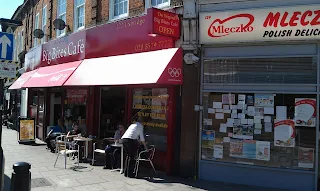In the past, it has been said, all the great art movements began on the altar. The secular culture echoed the forms of the liturgy and in reflecting them developed the liturgical instincts of all. In simultaneously reflecting and reinforcing the liturgical forms it help to preserve the culture of faith, as well as speaking to those who were not Catholic so that it is developing the liturgical instincts of the as yet un evangelised. We can point historically to the fact that grand civic buildings - created as showcases for secular culture - reflect a liturgical culture. For example, during the baroque period the great governement and royal buildings of the cities in both Catholic and Protestant countries reflected a form that originated in churches. The Houses of Parliament in London reflect a neo-gothic design strongly influenced by the movement in the design of churches at time with figures such as Pugin at its centre.
I think it is important to remember also that the buildings, art and artifacts of everyday, mundane life can also reflect this liturgical principle. No tourists are travelling to Hanwell to look at the town centre - I just happened to stop off there for breakfast when driving from central London to Heathrow. However, the fact that these Victorian architects sought to make an ordinary town centre beautiful and incorporate principles that point to the liturgical forms (whether they acknowledged that this is what they were doing or not) is significant. For all the fact that traffic was rushing by and I was looking at a pizza shop and an auto mechanic's shop, the presence of some grace is this ordinary environment made it pleasant on a sunny English summer's day (despite the at times unsympathetic modern amendments). In some small way, I believe that this raises the soul to God, even as I eat eggs, bacon, mushrooms and black pudding for breakfast. The desolation of the modern city is caused in part by this disconnect between the sacred and the profane and a glaring absence of beauty.
The tradition of Western proportion has its origins in pre-Christian classical culture and then we find Church Fathers who worked to incorporate this into a Christian context, especially Augustine and Boethius. They sought to reflect a numerical description of the patterns of the cosmos, which are also the basis for the numerical description of the cycles of the liturgy. The assumption behind this is that the beauty of the cosmos is a reflection of its order, which in turn is a participation in heavenly beauty.
My guess is that the architects who designed these houses and shops in Hanwell did not know about this connection at all, for after the Enlightenment, few did. As the Enlightenment took hold, it was only a remaining respect for tradition kept this use of proportion alive in architectural design. However, when some such as the Bauhaus movement started aggressively to challenge the relevance of tradition as a guiding principle, because few could articulate coherently any further reason for incorporating tradition proportion (beyond a broad principle of respect for the past), it could not withstand the challenge. By the Second World War the ideas of harmony and proportion were almost unknown in our architecture schools. This is why, in my opinion, we must not only look to the past to invigorate our traditions, but we must understand the basis of them too.
In the photographs below I show first the guest house of Buckfast Abbey in Devon. Not that the three storeys are unevenly spaced. They are designed harmoniously so that the first relates to the second as the second relates to the third. Then we see the buildings at a crossroads in the centre of Hanwell, which show the same threefold, rhythmical progression.






